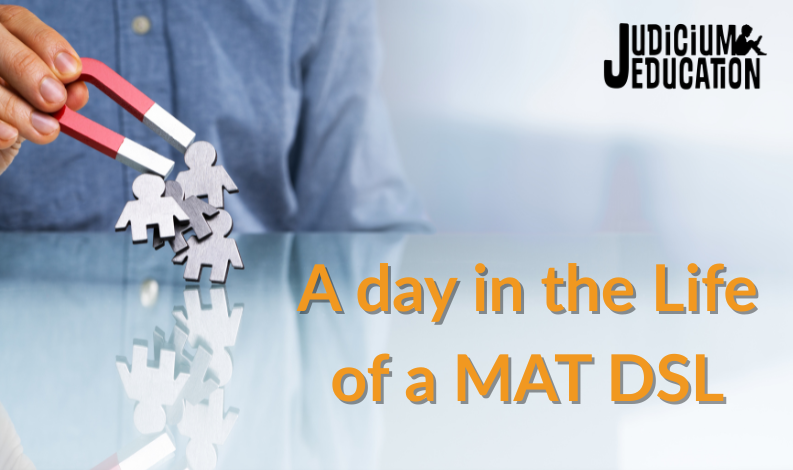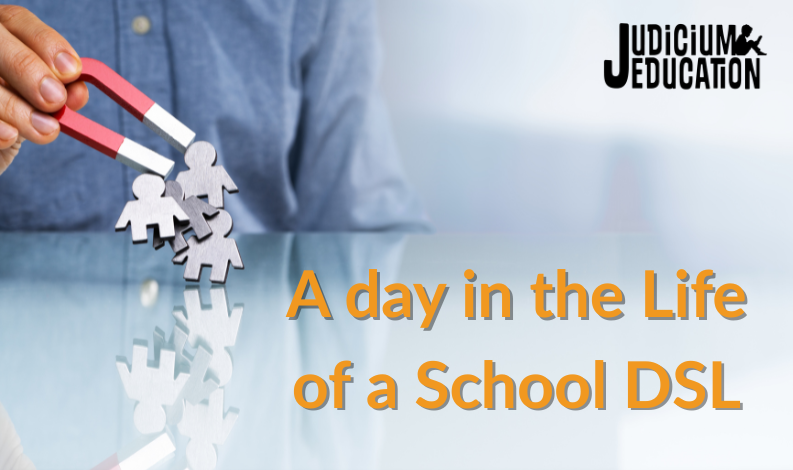Safeguarding for DSLs: How to Support your Governors to be Strategic and Drive Challenge

This blog is based on Judicium’s Safeguarding ‘Sofa Session’ from the 7th of September, with our resident expert Helen King. This session focused on how to ensure governors strike the right balance of challenge and support; how to ensure governors do not become operational; and how to push back when governors are not asking the right questions.
How can you ensure that Governors strike the right balance of challenge and support
Why is challenge and support necessary?
Between September 2019 and July 2021 Judicium reviewed all the Ofsted inspections that were judged safeguarding ‘Inadequate.’ Out of the 53 inspections reviewed, leadership and/or governance were mentioned as a contributing factor in 26 reports.
One Ofsted report stated that, “Governors are reliant on teachers to tell them what is working well.” You can read the full summary of the report here.
Difficulties arise when the safeguarding Governor has strategic responsibility for safeguarding but lacks the proficiency to execute this strategic responsibility, hindering the compliance of safeguarding.
Essentially the DSL and Governing body need each other, and their working relationship is critical to ensuring that a whole-school approach to safeguarding exists.
What is a Governor's role in safeguarding?
A key term that is repeated in both the Governance Handbook and Keeping Children Safe In Education (KCSIE) is Strategic Responsibility.
For example, the Governance Handbook (October 2020) states:- Governing bodies have a strategic leadership responsibility for their school’s safeguarding arrangements and must ensure that they comply with their duties under legislation. They must have regard to KCSIE ensuring policies, procedures and training in their schools are effective and always comply with the law.
- An individual on the Governing body (often known as safeguarding Governor) should have strategic leadership responsibility for the organisation’s wider safeguarding arrangements (and the Prevent Duty should be seen as part of this).
- Governors/Trustees should receive appropriate safeguarding training to make sure they have the knowledge and information needed to perform their functions, understand their responsibilities and assure themselves that their own organisation’s safeguarding arrangements are robust.
Although the safeguarding Governor will take the lead, all members of the body must have the knowledge, skills and training to execute this responsibility.
They should read Part 1 of KCSIE, and we recommend Part 2 as it gives an overview of management of safeguarding.
The safeguarding Governor should be proficient in the whole of KCSIE. In addition, they should receive training on the below to ensure that they can effectively challenge and support the DSL.
The link Governor for safeguarding will ensure that:- Policies are up to date, e.g., the child protection/safeguarding policy, staff behaviour policy and the handling of allegations against staff and volunteers/whistleblowing, and the low-level concerns policy.
- The school’s safeguarding systems and procedures are effective, and all staff know and follow them.
- The school has an appropriate safeguarding response to any child who goes missing from education.
- The school has appropriate online filters and monitoring systems in place and an effective online safety policy and curriculum.
- There are regular meetings with the DSL to ascertain if policies and procedures are effective, and whether staff and Governors have the requisite level of training.
- The DSL has additional time, funding, training, resources, and support needed to carry out the role effectively and is a member of the SLT.
- The school has appointed an appropriately trained designated teacher for LAC students.
- The curriculum relating to safeguarding is effective and covers online safety, RSE and how to keep safe.
- Checks to the single central record (SCR).
- NB: The safeguarding Governor does not need to check it themselves but does need strategic oversight.
- The whole Governing body is kept updated with statutory guidance relating to safeguarding and CP.
Please see here for details of Judicium’s CPD Safeguarding e-learning package that is available for unlimited usage across the school and appropriate for governors.
Good questions for the DSL to ask themselves:
- What information do you share with the safeguarding Governor? If they are going to be able to challenge and support you, then the quality and clarity of information shared is crucial.
- What training is in place for Governors and are you comfortable and confident in their knowledge? Is there training you could offer or signpost to them to plug gaps?
- How often do you meet with your safeguarding Governor? NB: Aim for termly
- What happens in those meetings?
How to Ensure Governors do not Become Operational
The role of the governor is strategic. It is not operational, so Governors do not:- Produce reports to the Governing body regarding safeguarding
- Deal with or have specific oversight of safeguarding incidents
- Deliver training themselves
What does strategic support rather than operational support look like from a Governor?
The DSL and link Governor should be meeting regularly, ideally termly.- In those meetings the Governor should be assured that the previous checklist is in place
- The DSL should be able to use them as a way of testing where you think safeguarding is at so when they meet with you, insist that they come into school and do the following:
- Speak to students about their experience of the school and get them to corroborate and test any information or any area you have been working on e.g., sexual abuse and harassment
- Speak to staff about their knowledge of safeguarding, processes in the school and their view on safeguarding within the school
- Speak to leaders to get a sense of their view of safeguarding and when needed seek an external audit.
Advocacy
Governors must ensure that the DSL is a member of the SLT and has additional time, funding, training, resources, and support needed to carry out the role effectively.- Does your DSL and their team receive supervision?
- If not, can the safeguarding Governor advocate for that?
- Is safeguarding part of the whole-school ethos, and what are the barriers to this?
- If those barriers are tricky for the DSL to circumnavigate, can they get the safeguarding Governor to help advocate and insist on removing such barriers?
- Does the DSL need additional resources or services?
Good questions for the DSL to ask themselves:
- Are your Governors hands-on?
- Are they supporting a whole-school approach to safeguarding?
- Can the DSL get them to help strategically by triangulating their findings?
- When the DSL meets and gives reports, are targets set and does the DSL follow up on these?
- Is the DSL being supported to fulfil their role effectively and is there any area the link Governor can advocate for their DSL?
How to Push Back when Governors are not Asking the Right Questions
Governors are strategic not operational! They do not need to know the details of individual cases or be reviewing individual files.
They should be looking for: trends, compliance, areas of strength and areas for development.
Examples of safeguarding Governor questions:
- “I have noticed that from your data analysis you have said that sexual assault disclosures under child-on-child abuse have increased since last academic year. Why do you think this is? What is telling you this? What more can we do?”
- “When I spoke to the students at the school, they felt that whilst the majority of students feel safe, they felt that bullying of LGBTQ students was a bit of a problem. Are you aware of this? What does your records say on this?”
- “I know that Ofsted have published their Rapid Review on Sexual Assault and Harassment. What are we doing about the recommendations from this?”
What happens if your Governors are not asking these questions?
- DSLs need the safeguarding Governor to give strategic responsibility in this area- and this is part of KCSIE and the Governance Handbook so they must be doing this.
- Speak to your safeguarding Governor and try to work out why this isn’t happening. Do they need further training or were they not fully aware of their role?
- If this does not lead to any results raise this with your headteacher or Chair of Governors. This person has a duty to provide this strategic support. There may be a simple solution or a chance to rearrange roles within the Governing Body to support this.
Sofa Session Summary Notes - Safeguarding for Governors: How to Strategically Support your DSL and the SLT
You can follow us on Twitter: @JudiciumSG @JudiciumEDU
If you’d like to review Judicium’s forthcoming sofa sessions please click here
© This content is the exclusive property of Judicium Education. The works are intended to provide an overview of the sofa session you attend and/or to be a learning aid to assist you and your school. However, any redistribution or reproduction of part or all of the contents in any form is prohibited. You may not, except with our express written permission, distribute or exploit the content. Failure to follow this guidance may result in Judicium either preventing you with access to our sessions and/or follow up content.
Related content

This blog deep dives into the everyday life of a Multi Academy Trust (MAT) Designated Safeguarding Lead (DSL). For a DSL, every decision echoes across schools, staff, and pupils. It’s a responsibility that requires a steady hand, sharp focus, and unshakable resolve. With over 22,000 multi-academy trusts in the UK, the role of a MAT DSL has become increasingly serious.

Volume 2 of our ‘A Day in the Life of a DSL’ series takes a deeper dive into the role of the Designated Safeguarding Lead (DSL) within schools. For many DSLs, the reality involves navigating unpredictable, emotionally charged situations that require immediate action. Their role isn’t about ticking boxes — it’s about making decisions that can profoundly impact a child’s life.

This is a summary taken from Judicium’s DPO ‘Sofa Session’ from 2nd of April, with Helen King and Sofia Mastrangelo. This session focused on the guidance on sharing safeguarding data and concerns, retention rules, and managing SARs in relation to safeguarding and considering exemptions.

This blog is based on Judicium’s Safeguarding & HR TRA and DBS referrals demystified ‘Sofa Session’ from the 29th January 2025, with our resident experts Sarah Cook and Jenny Salero.

In this blog, Helen King, Head of Safeguarding at Judicium Education shares her thoughts on the key trends that schools must look out for in 2025 and provides actionable advice and guidance in a Q&A style format.
.png)
This blog is based on Judicium’s Safeguarding ‘Sofa Session’ from the 27th November with our resident expert Joanne Bocko.


Safeguarding